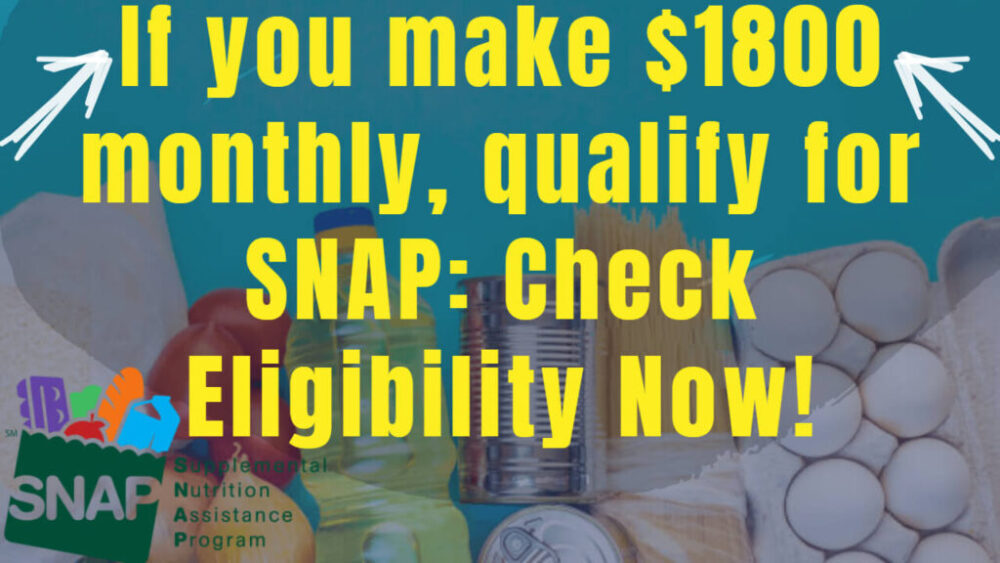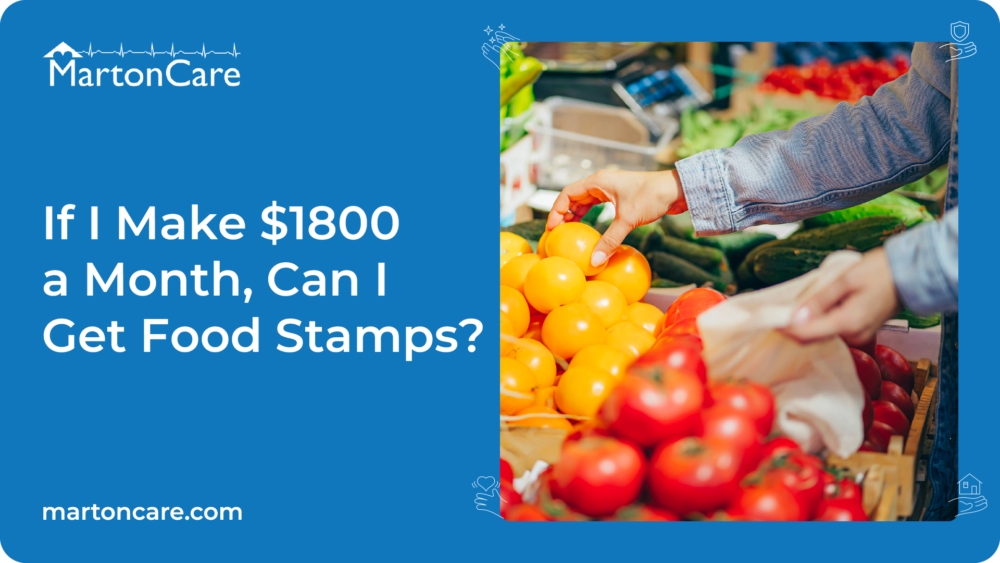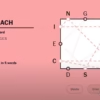Navigating the complex world of government assistance programs, such as the Supplemental Nutrition Assistance Program (SNAP), can be challenging, especially when determining eligibility. If you’re earning $1,800 a month, you may wonder if you qualify for food stamps and how the program works. This article provides a comprehensive guide to understanding SNAP eligibility, the factors that influence qualification, and tips for applying.
Understanding SNAP: What Are Food Stamps?
SNAP, commonly referred to as food stamps, is a federal assistance program designed to help low-income individuals and families afford nutritious food. Administered by the United States Department of Agriculture (USDA), SNAP provides benefits on an Electronic Benefit Transfer (EBT) card, which works like a debit card for purchasing food items.
The goal of SNAP is to reduce food insecurity and improve access to essential nutrition for those in need. However, eligibility for the program depends on several factors, including income, household size, expenses, and citizenship status.
Income Eligibility Criteria for SNAP
When determining eligibility, SNAP uses income limits that vary by state, household size, and gross and net income calculations. Here’s a breakdown of these terms:
- Gross Income: This is your total household income before deductions such as taxes, Social Security, and other expenses.
- Net Income: This is your gross income after allowable deductions, such as childcare costs, medical expenses (for elderly or disabled individuals), and shelter costs.
For most households, both gross and net income must fall below certain thresholds to qualify for SNAP. As of 2024, the federal income limits for SNAP are approximately:

- Gross income limit: 130% of the federal poverty line (FPL)
- Net income limit: 100% of the FPL
The FPL adjusts annually and varies by household size. For a single-person household in 2024, the gross income limit is roughly $1,580 per month, while a family of four’s gross income limit is around $3,268.
Does $1,800 Monthly Qualify for SNAP?
Whether earning $1,800 a month makes you eligible for SNAP depends on the size of your household and allowable deductions. Here’s a closer look:
- Single-Person Household:
If you’re a single individual, $1,800 exceeds the gross income limit of $1,580 in most states. However, you might still qualify if you have high expenses that reduce your net income below the limit. - Larger Households:
For a family of two or more, $1,800 could fall below the gross income threshold, making you eligible. Each additional household member increases the income limit, so it’s important to know where you stand.
Deductions That May Help You Qualify
The SNAP program allows specific deductions to calculate net income, which can significantly impact eligibility. Common deductions include:
- Standard Deduction: A set amount based on household size, subtracted from gross income.
- Shelter Costs: Expenses like rent, mortgage, and utilities that exceed half of your household income after other deductions.
- Medical Expenses: Out-of-pocket medical costs exceeding $35 for elderly or disabled members.
- Childcare Costs: Expenses for dependent care necessary for work or education.
For example, if you earn $1,800 monthly but pay $800 in rent and $300 in utilities, your net income could be low enough to qualify.
State-Specific Guidelines
SNAP is a federal program, but states have some flexibility in administering it. Certain states may have higher income limits or expanded eligibility rules. For example, states participating in “Broad-Based Categorical Eligibility” (BBCE) might allow households with gross incomes slightly above the federal limit to qualify.

To determine your eligibility, it’s essential to check your state’s SNAP income guidelines. State-specific tools and online calculators can help estimate your eligibility based on income and expenses.
Household Size and Composition
Your household size is a critical factor in SNAP eligibility. A household is defined as people who live together and purchase and prepare meals together. Common household types include:
- Single Individuals: One-person households must meet lower income limits than larger households.
- Families: Each additional family member raises the income threshold, making it easier to qualify with a higher income.
- Roommates: If you share housing but purchase and prepare food separately, you may be considered separate households for SNAP purposes.
Additional Eligibility Requirements
In addition to income, SNAP applicants must meet other criteria:
- Citizenship or Legal Residency: Most applicants must be U.S. citizens or lawful permanent residents. Certain non-citizens may qualify under specific conditions.
- Work Requirements: Able-bodied adults without dependents (ABAWDs) must meet work requirements to receive benefits beyond three months.
- Resource Limits: Some households must have assets below a certain limit, such as $2,750 in countable resources or $4,250 if a household member is elderly or disabled.
How Much Assistance Could You Receive?
The amount of SNAP benefits you receive depends on your household size, income, and expenses. Benefits are calculated using the “Thrifty Food Plan,” which estimates the cost of a nutritious, minimal-cost diet.
For example, as of 2024, the maximum monthly benefit for a single-person household is approximately $291, while a family of four can receive up to $973. However, households with higher incomes typically receive lower benefits.
How to Apply for SNAP
If you believe you qualify for SNAP based on your $1,800 monthly income and household circumstances, here’s how to apply:
- Gather Documentation: Prepare documents like proof of income, rent/mortgage statements, utility bills, and identification.
- Apply Online or In Person: Most states offer online applications through their Department of Social Services websites. You can also apply in person or by mail.
- Interview Process: After submitting your application, you may need to complete an interview to verify your information.
- Receive a Decision: States typically process applications within 30 days. Emergency applications for urgent needs may be expedited.
Common Questions About SNAP Eligibility
- Can I qualify if I’m unemployed?
Yes. SNAP is available to unemployed individuals who meet income and resource limits. - What if my income fluctuates?
SNAP considers your average monthly income, so temporary changes may not immediately affect eligibility. - Can college students apply for SNAP?
Students can qualify under specific circumstances, such as working at least 20 hours per week or participating in certain work-study programs. - What if I’m denied?
If your application is denied, you have the right to appeal the decision. Gather additional documentation to support your case and contact your local SNAP office for guidance.
Tips for Maximizing Your Benefits
- Report all allowable expenses to reduce your net income.
- Update your caseworker about changes in household size, income, or expenses.
- Use online calculators to estimate your benefit amount before applying.
Conclusion
Earning $1,800 a month doesn’t automatically disqualify you from receiving SNAP benefits, but eligibility depends on household size, allowable deductions, and state-specific rules. By understanding the program’s requirements and carefully documenting your income and expenses, you can determine whether you qualify and how much assistance you may receive. If you think you’re eligible, applying is worth the effort to secure support for yourself and your family.



